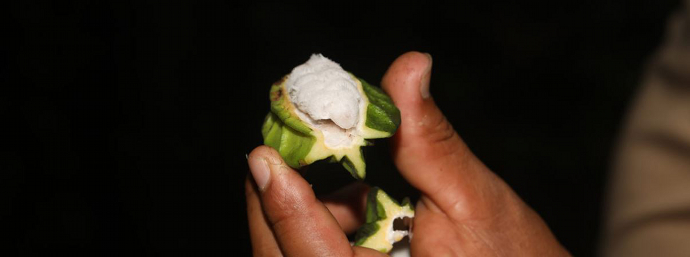Cacao pod in Peru. Photo by Rhett A. Butler.
Latin America has twice the
plant life of Africa, SE Asia
by Mongabay.com
- Latin America has more than twice as many plant species as tropical Africa and Southeast Asia and accounts for about a third of global biological diversity, concludes a new study published today in the journal Science Advances.
- Using botanical databases, researchers led Missouri Botanical Garden President Emeritus Peter Raven by found Latin America has 118,308 known species of vascular plants, the Afrotropical region has 56,451, and Southeast Asia has about 50,000.
- Latin America and the Afrotropical region are roughly equivalent in size, meaning that the Americas south of the Mexico-US border have about twice the richness of species on a per-unit basis. But Southeast Asia, which is only a quarter the size of the other two regions, takes the biodiversity crown in terms of the density of species.
- The authors say that their research will be helpful in prioritizing conservation efforts, but that future data collection will be increasingly challenged by rapid habitat loss.
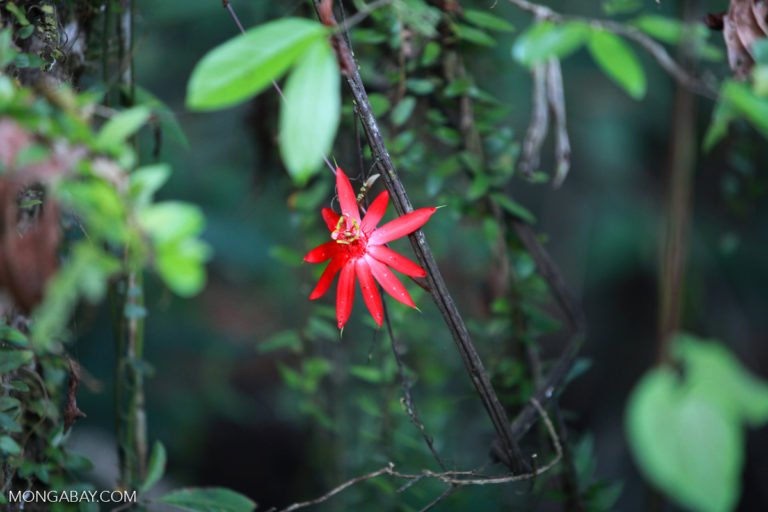
Red passion vine flower in the Colombian Amazon. Photo by Rhett A. Butler.
Latin America has more than twice as many plant species as tropical Africa and Southeast Asia, accounting for about a third of global biological diversity, concludes a new study published in the journal Science Advances.
Researchers at the Missouri Botanical Garden, the Université des Antilles in France, the Geneva Botanical Garden, the Instituto de Pesquisas Ecológicas in Brazil, and Florida International University analyzed botanical databases at regional levels, comparing species richness for Mesoamerica and South America, Africa south of the Sahara plus Madagascar, and Southeast Asia. They found Latin America has 118,308 known species of vascular plants, the Afrotropical region has 56,451, and Southeast Asia has about 50,000.
Latin America and the Afrotropical region are roughly equivalent in size, meaning that the Americas south of the Mexico-US border have about twice the richness of species on a per-unit basis. But Southeast Asia, which is only a quarter the size of the other two regions, takes the biodiversity crown in terms of the density of species. Southeast Asia’s diversity is amplified by the plethora of islands, which create unique habitats and niches. Latin America’s biodiversity is boosted by the world’s highest extent of tropical forest cover (e.g. the Amazon, the Chocó, and the Mata Atlȃntica) and the rugged topography of Central America and the Andes mountain range.
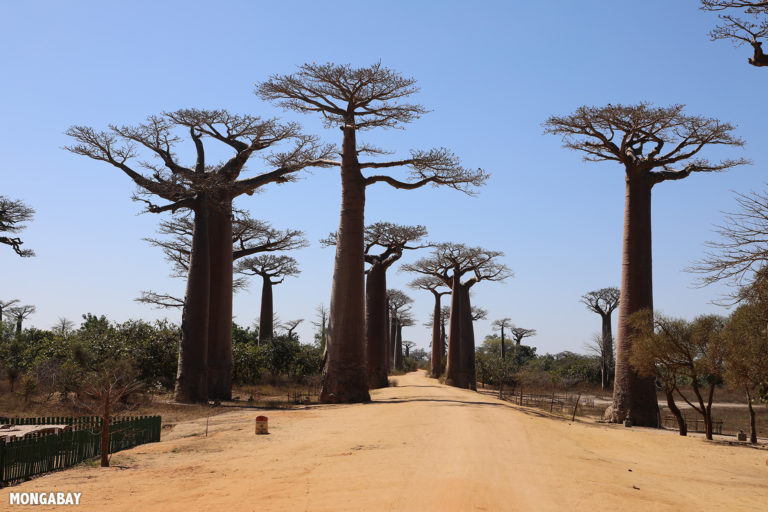
Baobab Alley outside Morondava. Photo by Rhett A. Butler / Mongabay.
The databases also proved useful in assessing the state of knowledge about botanical diversity across the regions.
“On average, 173 newly described species have been added to the flora of the Afrotropical Region each year since 2008, with 54 of these from Madagascar,” the authors, led by Missouri Botanical Garden President Emeritus Peter Raven, write. “An average of 749 new species has been described annually from Latin America for the past 25 years, with no demonstrable tendency to level off. The number of newly described plant species added for Southeast Asia (5,708,000 km2) has been growing at an average of 364/year for the past 12 years.”
“This is a clear indication of how very rich in plant species and relatively poorly known Southeast Asia remains.”
The authors also compared animal diversity across the regions and found similar patterns, except for ants and butterflies. Extrapolating from this data, the researchers estimate that Latin America is home to a third of terrestrial biodiversity.
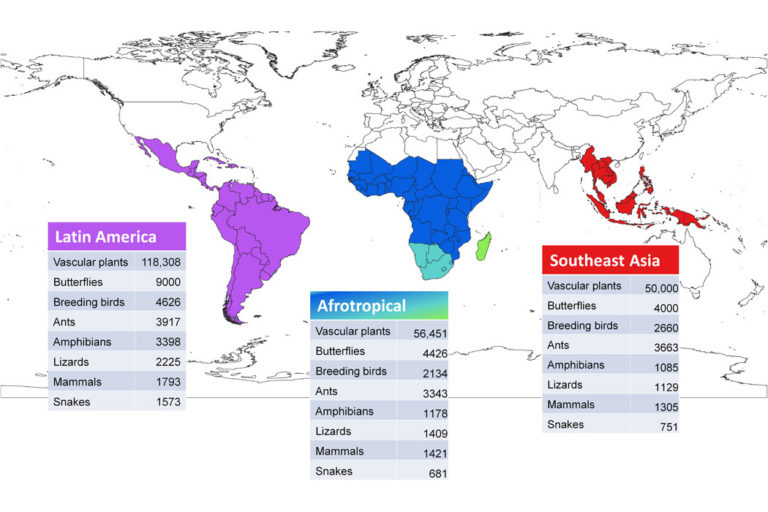
The authors say that their research will be helpful in prioritizing conservation efforts, but that future data collection will be increasingly challenged by rapid habitat loss.
“The destruction of ecosystems is taking place so rapidly throughout the tropics that it will be difficult to obtain additional information bearing on the matters reviewed here,” they write. “With the global population currently 7.8 billion, projected to increase to nearly 10 billion over the next 30 years, and our current consumption of natural productivity having reached around 175% of what is available sustainably, the future for most natural ecosystems looks dim.”
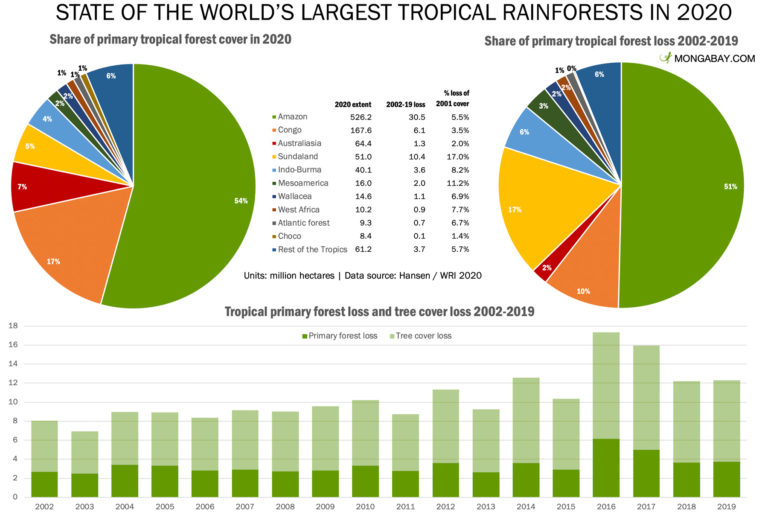
“Thus far, we have named no more than 10% of tropical plants and animals, and at current rates of discovery, most are likely to be long gone before we become aware of their existence. A division of effort between strengthening our knowledge of well-known groups, similar to those reviewed here, to reveal general patterns, and gaining some knowledge of the lesser-known groups by carefully designed sampling approaches, is apparently the best that we can do. But it is well worth the effort to do so, for its own sake and to provide the best possible basis for conservation.”
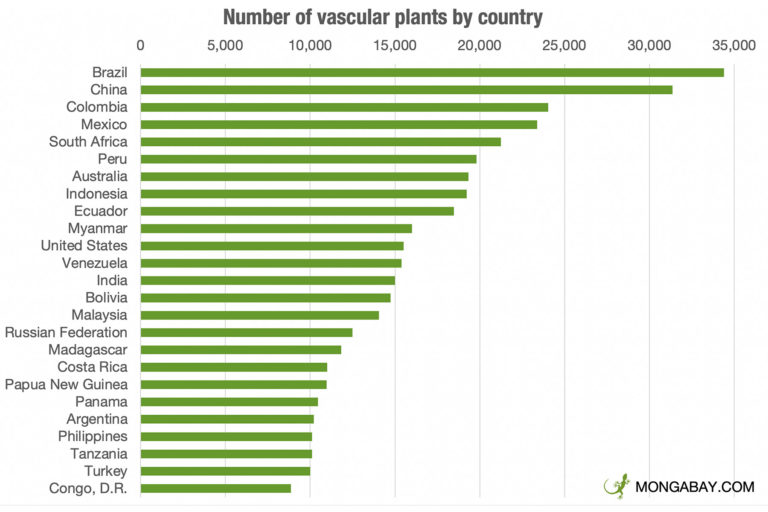
CITATION: Peter H. Raven, Roy E. Gereau, Peter B. Phillipson, Cyrille Chatelain, Clinton N. Jenkins, and Carmen Ulloa Ulloa. The distribution of biodiversity richness in the tropics. Science Advances 09 Sep 2020: Vol. 6, no. 37 DOI: 10.1126/sciadv.abc6228
Contact us by email at fund4thepanamanews@gmail.com
To fend off hackers, organized trolls and other online vandalism, our website comments feature is switched off. Instead, come to our Facebook page to join in the discussion.
These links are interactive — click on the boxes

